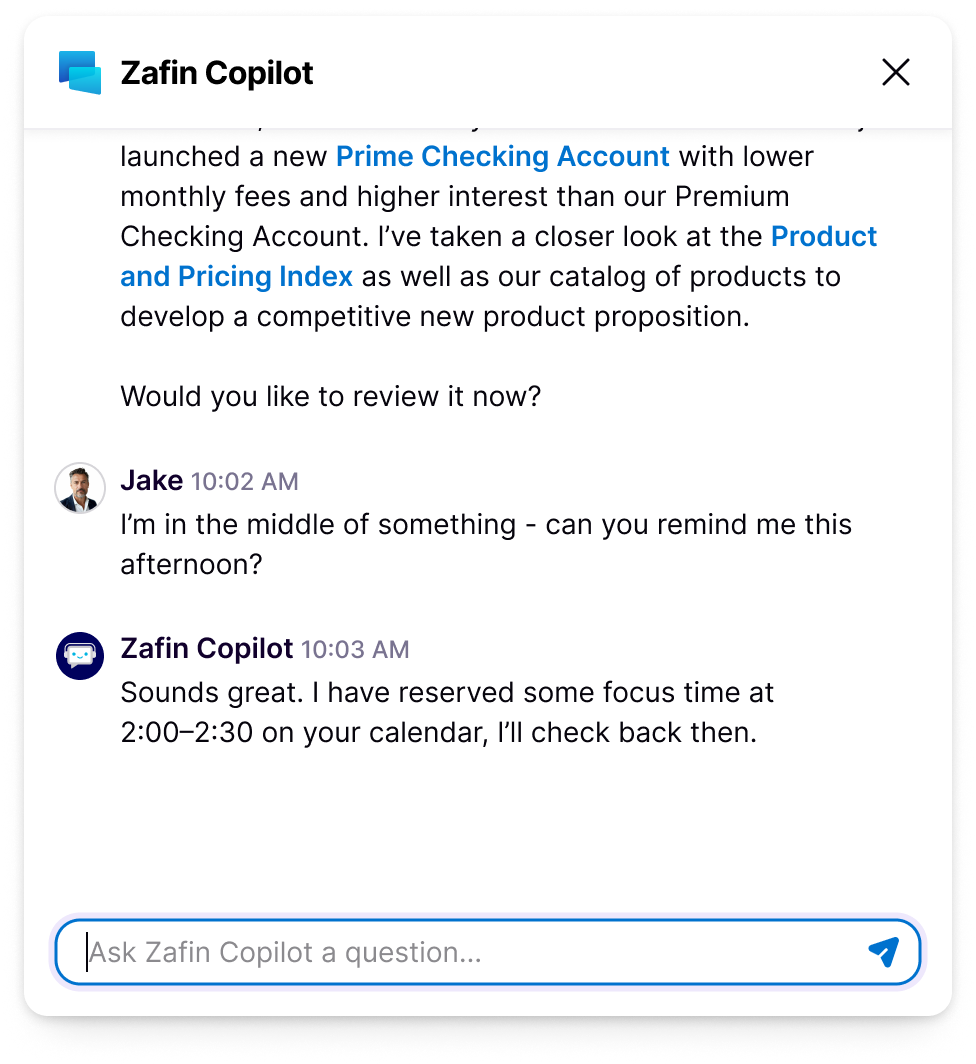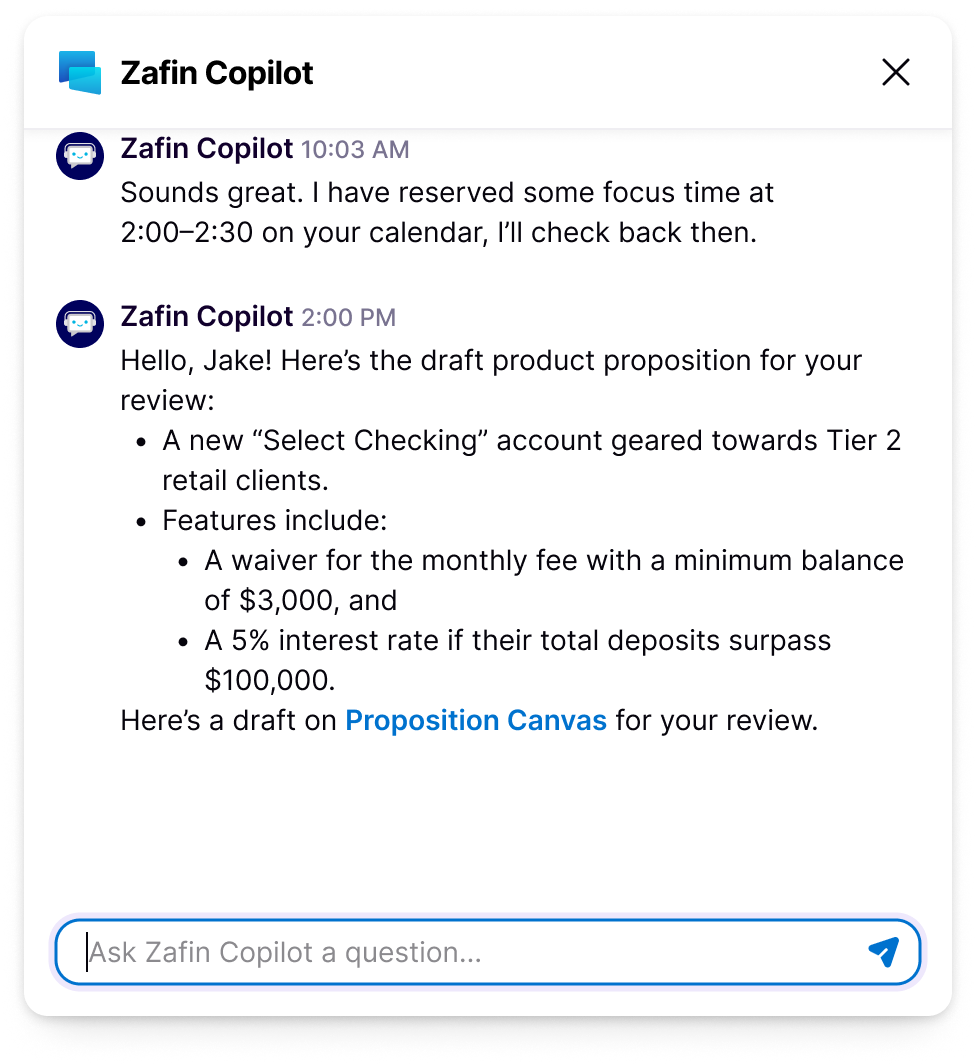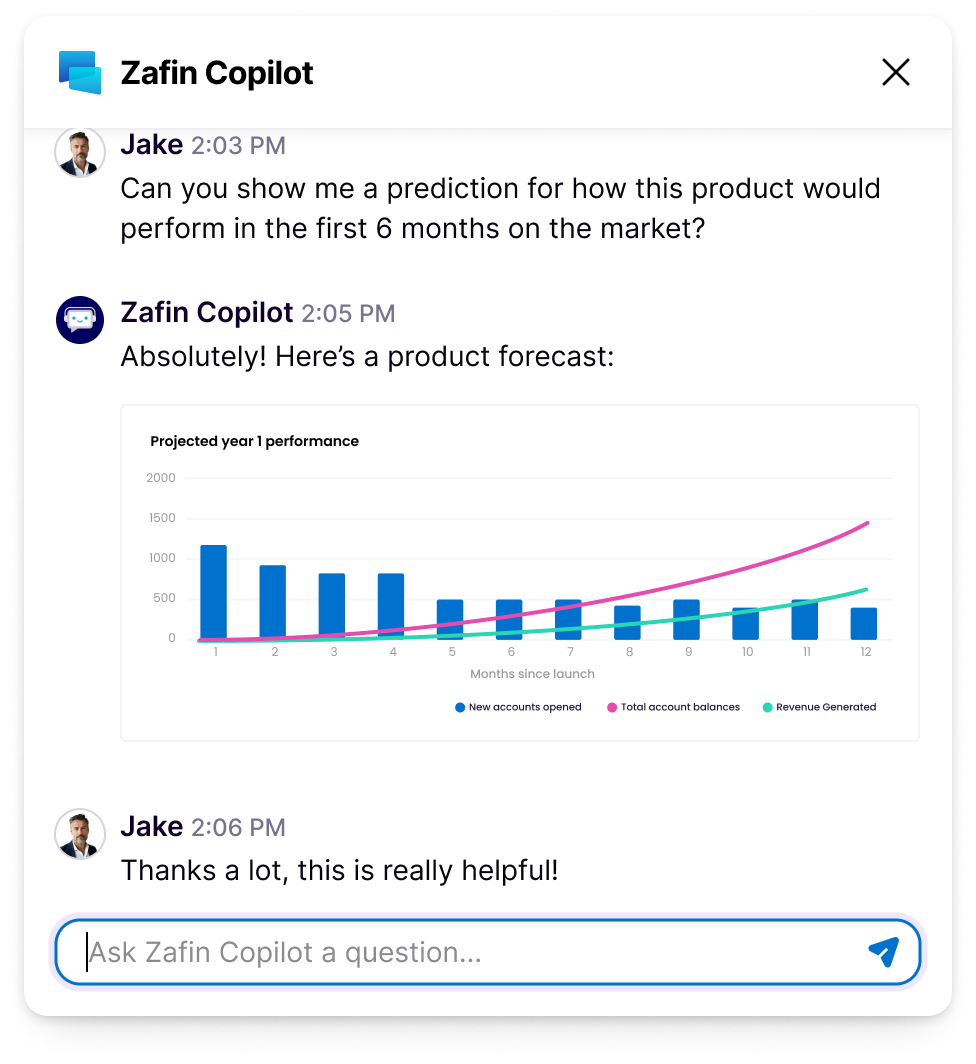At Zafin, we believe Generative AI is poised to become the operating system of the future, an omnipresent force that underpins every digital interaction. In this future, the static user interfaces and predetermined flows we’ve grown accustomed to will give way to dynamic, personalized experiences crafted by AI in real-time, tailored to each user’s request and preferences.
In this article, we will explore Zafin’s perspective on generative AI and how it will redefine the way we interact with technology, design our workflows, and envision the future of digital enterprises. This is not just an evolution of the digital experience; it’s an opportunity to fundamentally reinvent how we interact with our data and our customers.
Generative AI as the operating system of the future
Generative AI is rapidly positioning itself as the operating system of the future, a foundational layer upon which the next generation of technologies will be built. Much like an operating system that manages a computer’s basic functions and facilitates the creation and execution of software applications, generative AI will orchestrate complex tasks, automate decision-making processes, and generate content across various domains.
Its ability to iteratively improve, adapt, and produce outcomes beyond the scope of predefined programming makes it an indispensable tool for innovation. As generative AI continues to
evolve, it will become the bedrock of digital ecosystems, enabling businesses to operate with unprecedented agility and creativity.
The implications of generative AI for businesses and consumers are profound. For businesses, it means a shift towards more dynamic and responsive operational models, where AI-driven systems can anticipate market changes, optimize workflows, and personalize customer interactions at scale. Consumers, on the other hand, will benefit from more intuitive and tailored experiences, as generative AI learns to understand and predict individual preferences and behaviours. This symbiotic relationship between generative AI and its users promises not only to enhance efficiency and productivity but also to redefine the very nature of how services are conceived and delivered.






